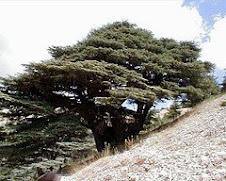Breakthrough on mystery of vanishing honey bees
by Am Johal
article from: http://nation.ittefaq.com/issues/2007/12/31/news0019.htm
Over the past year, honey bees have been dying across North America in unprecedented numbers and, until this month, no one seemed to be able to prove beyond a reasonable doubt what the cause may have been.
What has been dubbed "colony collapse disorder" can work through a honey bee colony in a matter of weeks. Bees fly off to collect pollen, but never return -- or simply weaken and die in the hives. Beyond the larger effects on the food chain, the economic implications of these deaths are immediate because honey bees are integral to the pollination of tens of millions of dollars of cash crops in North America.
Scientists from Penn State University say they have found a connection between Israeli Acute Paralysis Virus (IAPV) and colony collapse disorder. In a conference call last week, researchers argued that the virus, in conjunction with other stress factors, is likely the cause of the disorder, which has resulted in a loss of 50-90 percent of North American bee colonies. It was originally discovered in Israel in 2004, the same year that Australian bees were imported in to the United States.
Colony collapse disorder has also been observed in Poland, Greece, Italy, Portugal and Spain, and unverified reports have surfaced in Switzerland and Germany. Cases have also been reported in India and Brazil.
David Hackenburg, a beekeeper near Tampa Bay, Florida, lost nearly 2,000 of his 3,000 hives in a matter of weeks last winter. He has since been raising the issue with university researchers, bureaucrats at state agencies and elected politicians. He has told a number of media outlets that new synthetic nicotine-based pesticides known as neonicotinoids, or neonics, are the major contributing factor. Researchers told IPS that further studies will include these pesticides as possible contributing factors. Some large environmental groups, like the Sierra Club, also believe that genetically modified food production could be a contributing factor. A comprehensive British study found that genetically modified crops in conjunction with powerful chemicals were harmful to bees, butterflies and birds.
Researchers from the Pennsylvania Department of Agriculture and other U.S. states have been conducting geographic database tests to understand the magnitude of the problem and whether linkages exist with colony collapse disorder.
But other scientists argue that there is scant evidence that the Bacillus thuringiensis toxin produced by genetically modified crops is a factor in the mass deaths of bees.
According to Science Daily, a team of scientists from Edgewood Chemical Biological Centre and the University of California at San Francisco have identified a virus and a parasite that are likely culprits in the recent deaths.
Penn State University's Colony Collapse Working Group had drawn no clear conclusions as to what the causative factors may be until this week. In July 2007, the U.S. Department of Agriculture released a "Colony Collapse Disorder Action Plan" which states, "The current strategy for addressing the CCD crisis involves four main components: 1) survey and data collection; 2) analysis of samples; 3) hypothesis-driven research; and, 4) mitigation and preventative action."
Dr. Mariano Higes, a scientist based in Guadalajara, Spain, has concluded that European honey bees suffering from colony collapse disorder fell victim to Nosema ceranae, a micro-sporidian fungus. The research team led by Higes has been investigating the issue since 2000 and ruled out any other causes. U.S. scientists have stated that although it may be a factor, it is not the only cause of the disorder.
Eric Mussen, a University of California Davis apiculture expert, believes that small variations in weather caused by climate change could affect the water, nectar and pollen the bees rely on. Mussen also argues that bees have many viruses, but it is their weakened immune systems that are making them susceptible to death. The first cases came to public view in late 2006. Since then, speculation has ranged about the causes from a diverse set of theories which range from new pesticides, genetically modified crops, agricultural products, climate change, viruses cell phones.
In the 1940s, there were an estimated 5 million managed bee colonies in North America. Now there are just over 2 million. Adverse weather conditions and hurricanes have also contributed to the heavy losses of bee colonies in recent years.
For example, the almond season begins in February for the bees, a cold season in North America which can affect their endurance. The economy of the almond season is particularly lucrative for those raising bee colonies. Migratory beekeeping is also widespread in the United States. Beekeepers earn more money renting bees out for pollination than they do from honey production. Bee keepers often truck their colonies to Florida, Texas, California and other states. Migratory beekeeping has been in practice in the United States since 1908. Climate change could also be a factor in weakening the bees and has affected the pollination of crops in many agricultural areas in North America. The value of crops for which honey bees are the prime pollinator is estimated to be in the 15-billion-dollar range in the United States. California's almond industry alone, which relies on pollination from honey bees, is worth 1.5 billion dollars.
Honey bees are not native to North America. Though indigenous plants can survive without them, the pollination from honey bees is instrumental for growing fruit and vegetables like apples, cherries, tomatoes, zucchinis, cantaloupes and many other crops. Dr. Leonard Foster, a University of British Columbia Assistant Professor of Biochemistry told IPS, "There is certainly something happening in the United States and it is difficult to say if it is due to a bacteria or fungus -- it is difficult to detect with the current methods."
"It could be various factors combined, but it is difficult to verify at this time -- climate change, antibiotics or the use of pesticides where bees may visit. We have various historical records that show that there are fluctuations with beehives every seven or eight years that are affected by weather conditions and crop yields. It is too early to draw conclusions yet."
Troy Fore, president of the American Beekeeping Federation, told IPS, "Lately, we haven't heard much since it is the summer season. The losses seem to be associated with the winter as it's the natural end of a colony's life cycle."
"I hear from beekeepers, but many have been damaged earlier in the year. The colonies that have been affected are not as productive," he added. "But we still have no smoking gun."
(This story is part of a series of features on sustainable development by IPS and IFEJ - International Federation of Environmental Journalists.)
Also suggested:
SolarIntell.com - Best Alternative Energy Websites and Blogs
Geotherma.info Geothermal Energy Technology
Denmark’s Ritual of Militarisation
-
On December 8, 2025, the Copenhagen Security Summit convenes at Falkoner
Centret in Frederiksberg. With 35 speakers and more than 1,200
participants, it ...
6 hours ago



No comments:
Post a Comment